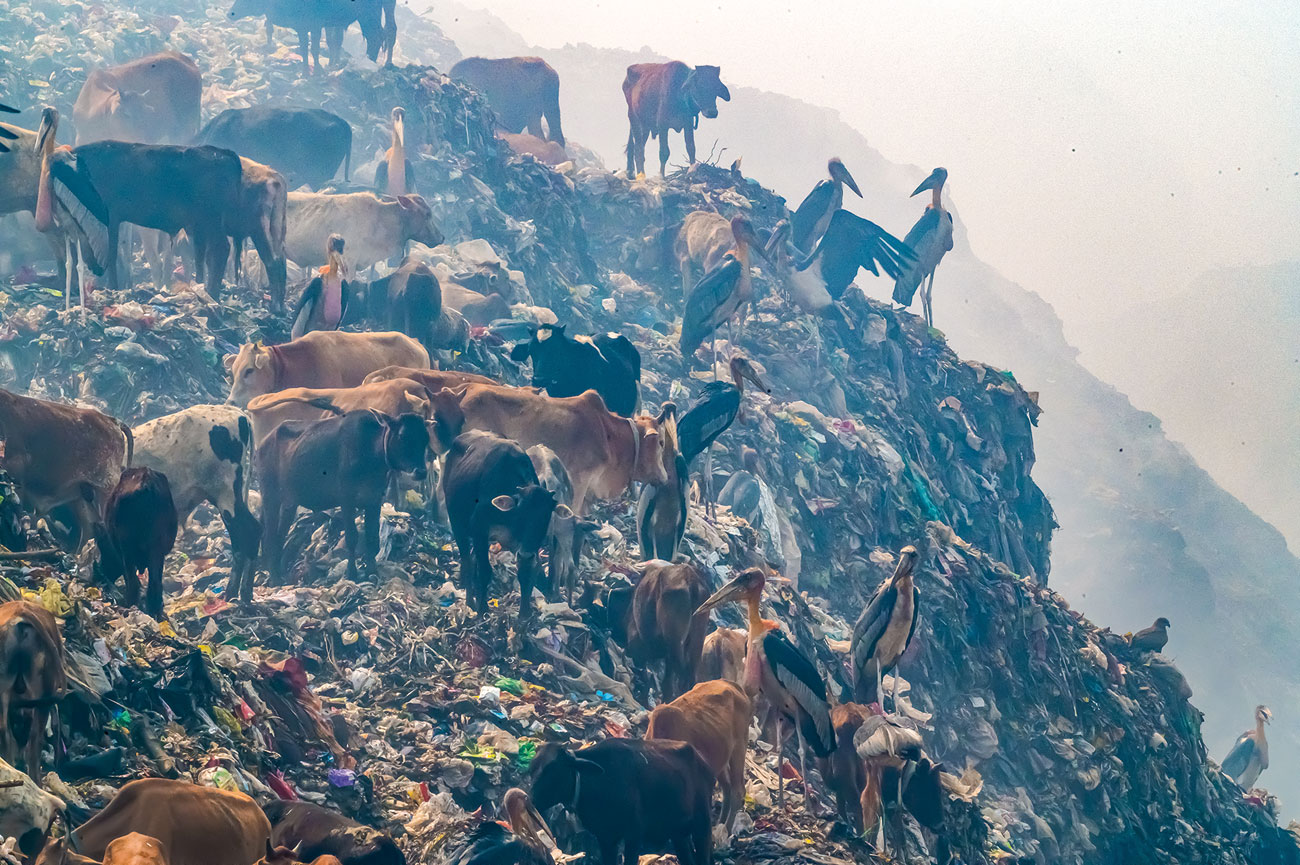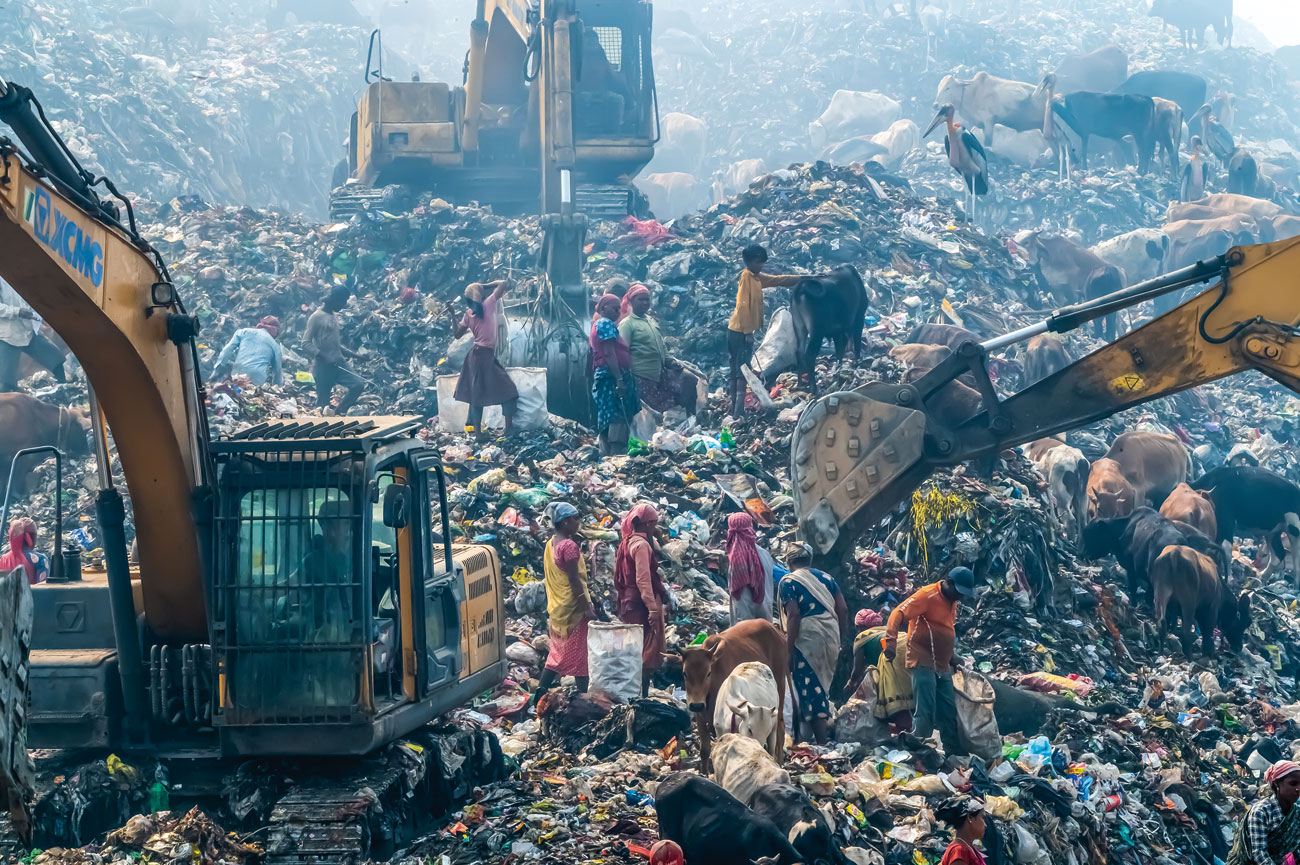Desolation Amidst Life: Guwahati's Garbage Dump
First published in Sanctuary Asia,
Vol. 44
No. 4,
April 2024
By Nikhil Devasar
In the heart of Guwahati, where the cacophony of city life fades into the distant hum of despair, lies a world forgotten by many, but endured by some. Here, amidst towering heaps of refuse, where the stench of decay mingles with the dust of broken dreams, a community survives amongst the detritus of civilisation.
I ventured into this realm of desolation, drawn not just by the grotesque spectacle of the garbage dump, but by the resilience of those who call it home. What I discovered was a juxtaposition of human suffering and natural beauty, where the coexistence of life and death hangs precariously in the balance.

Lone sentinels amidst the refuse, these majestic Adjutant Storks Leptoptilos dubius gaze upon the wasteland with a sombre grace, embodying the silent resilience of creatures impacted by humanity's disregard for their home. Photo: Nikhil Devasar.
Upon arrival at the Boragaong Garbage Dump in Guwahati, the first thing that struck me was the sheer magnitude of the dump. Mountains of trash stretched as far as the eye could see, a testament to our society's insatiable appetite for consumption and disregard for its consequences. Yet, amidst this human-made wasteland, people had carved out a semblance of existence. Families lived in makeshift shelters cobbled together from salvaged material, their homes perched precariously on the edge of oblivion. Children played amidst the refuse, their laughter echoing against the walls of decay. It was a scene both heartbreaking and surreal, a testament to the resilience of the human spirit in the face of unimaginable adversity.
Amid the chaos of human existence, there was another presence that demanded attention – the highly endangered Greater Adjutant Stork Leptoptilos dubius, possibly one of the most endangered storks in the world. These magnificent birds, once abundant in the region, now find themselves teetering on the brink of extinction owing to habitat loss and pollution. Yet, here they were, navigating the toxic landscape with a grace that belied their plight.
Among the largest stork species in the world, dwarfing many humans, these birds stand over 1.5 m. tall, with an immense wingspan just under 2.5 m. They consume a varied diet of fish, amphibians, crustaceans, insects, and reptiles. They often scavenge, and can be found in garbage dumps. However, this puts them at risk of pollutants and contaminants in the food they scavenge. In India, the stork is currently known from only two places, Assam and Bihar. The species is extinct in most of its range, and outside of India some may still be found in Cambodia.
As I focused my camera on these majestic creatures, I couldn't help but feel a sense of shame and sorrow. How had we allowed ourselves to reach this point, where the very creatures that once soared high above us were now forced to scavenge in our refuse? But amidst the despair, there was also hope. Local organisations such as the Hargila Army led by Purnima Burman work tirelessly to protect and preserve the natural habitats of these endangered birds, offering a glimmer of hope in an otherwise bleak landscape.

Among the largest stork species in the world, Greater Adjutant Storks often scavenge, and can be found in garbage dumps such as the Boragaong Garbage Dump in Guwahati, Assam. Unfortunately, this puts them in contact with contaminants and toxins. Photo: Nikhil Devasar.
As I left the garbage dump behind, images of that desolate world haunted me. The juxtaposition of human suffering and natural beauty served as a stark reminder of our collective responsibility to protect and preserve the fragile ecosystems that sustain us all.
In the final analysis, the garbage dump at Guwahati is more than a mere testament to human excesses – it's a microcosm of the existential challenges we face as a species. A reminder that our actions have consequences, not just for ourselves but for the myriad forms of life with which we share this planet. And it is also a call to action, a plea to do better, to be better, before it is too late.
Delhi-based Nikhil Devasar is the founder of delhibird Foundation that conducts awareness and educational programmes for young adults and school children, census of Delhi’s birdlife through the annual Big Bird Day. He has authored several books and his images are regularly featured in Indian and international nature publications.



